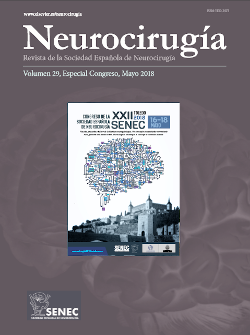P0135 - VASOSPASM AFTER TRANSSPHENOIDAL RESECTION OF AN ADAMANTIMATOUS CRANIOPHARYNGIOMA – A CASE REPORT OF AN UNUSUAL POSTOPERATIVE COMPLICATION
Hospital Universitario Mayor-Mederi, Bogotá, Colombia.
Objectives: The aim of this paper is to describe vasospasm and delayed cerebral ischemia (DCI) associated with craniopharyngioma transsphenoidal resection surgery (TRS), a rare but severe complication that requires high suspicion to make an early diagnosis and timely treatment.
Methods: A 65 year-old female with suprasellar lesion suggestive of craniopharyngioma, she underwent elective TRS with complete resection reached, there were no significant intraoperative bleeding or vascular injury, however intraoperative dural and cystic fluid leak was identified.
Results: The patient was transfer to ICU, altered state of consciousness was persistent, CT identified hypodensities areas in posterior circulation, and arteriography revealed moderate-severe vasospasm in basilar artery and posterior inferior cerebellar arteries (PICA), and partial reversion with intra-arterial nimodipine was reached. Close follow-up and treatment with oral nimodipine, high blood pressure and fluid restoration was established. Vasospasm is an uncommon complication in TRS of a craniopharyngioma, few cases has been described. Many theories have been proposed about pathophysiology, early vasospasm is often associated with cyst rupture, bleeding and vascular injury, however, late vasospasm could not be explained by these theories, changes in electrolytic, fluid and hormonal status by hypothalamic mediation as well as aseptic or infectious meningitis could be alternative explanations. There are not established protocols of management but extrapolation from vasospasm due to subarachnoid hemorrhage (SAH) is a reasonable alternative.
Conclusions: Vasospasm is a potential complication during TRS of a craniopharyngioma. Although rare is important to know about this phenomenon in order to improve early recognition and diagnosis. About etiology few is known but several theories have been proposed. There is a lack of evidence and not established guidelines for management, however guide the treatment based on vasospasm in SAH seems to be recommended. Future studies are necessary to clarify vasospasm associated with craniopharyngioma and provide better prognosis to our patients.







